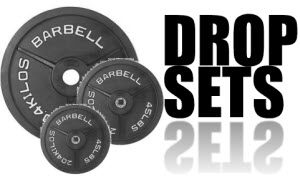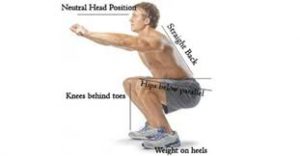If you’ve spent any time reading through workout plans to figure out how to get better results in the gym, there’s a good chance you’ve come across time under tension training.
But from what I see in the gym from day to day, most people have either never heard of time under tension training. Or maybe they have, and just don’t use this training technique to their advantage.
A better way to train
If you’re hitting the gym, working out, and logging your reps and sets. Keep it up. That’s always going to be better than sitting at home watching TV, and polishing off a bag of potato chips.
But all too often, I see people in the gym rushing through their workouts to build muscle. For example, load up the bench press.
Lift the weight off the rack, crank out 6 to 12 reps as fast as possible, and move on to the next set or exercise.
If you’re totally new to training, any amount of strength training is going to help you make some muscle gains. But there’s a better way to train.
Time under tension training can level up the intensity of your workouts, hit your muscles harder, and lead to greater gains. Here’s what you need to know.
The principle of time under tension
What is time under tension? It’s the amount of time your muscles are working during an exercise.
When your muscles experience a greater amount of time under tension, it damages muscle fibers and triggers a response to repair the damage, and build more muscle.
So if you rush through a workout, your muscles will experience less time under tension than performing your reps with a more slow controlled tempo.
The three phases of an exercise
Let’s say you’re going to work your biceps with some EZ-bar curls. You pick up the barbell. Your arms are extended, and the bar is hanging mid-thigh. You flex your biceps and begin moving the bar upward. At the top of the curl, you squeeze your guns (and take a look in the mirror), and then lower the weight back to the starting position.
There are essentially three phases to an exercise, EZ-bar curls or any other lift.
Pay attention to each phase of a lift, and you can use the principle of time under tension to get better results. The three phases of an exercise are:
Eccentric - In this phase of an exercise movement, the muscle is lengthening. In the EZ-bar example, you’re beginning and ending the lift in the eccentric phase and the tension is lengthening the bicep muscle.
Isometric - Grab the EZ-bar, engage your biceps, and lift the weight until your elbows form a 90-degree angle. When you reach this point during the movement, you’re in the isometric phase.
Concentric - Once you reach the isometric phase of an arm curl, you begin lifting the weight up towards your shoulders.
In the bicep example, the muscle is under tension and contracting. And it’s right in the middle of going from the eccentric phase to the concentric phase, or from the concentric phase to the eccentric phase.
As you do this, your bicep muscle is shortening and contracting. To complete the rep, you work backwards through each phase.
Time under tension works
When Canadian researchers recruited a small group of men for a study on time under tension, they wanted to see if it really had an impact on muscle growth.
They compared the results of a typical lifting tempo ( 1 second concentric, 1 second eccentric), to a much slower lifting tempo (6 seconds concentric, 6 seconds eccentric).
They used a series of lab tests to compare protein synthesis (muscle growth) at the beginning and end of the study.
They found that increasing time under tension with resistance training has a positive impact on muscle growth compared to using a faster lifting tempo.
“These results suggest that the time the muscle is under tension during exercise may be important in optimizing muscle growth,” says lead researcher Nicholas Burd.
“This understanding enables us to better prescribe exercise to those wishing to build bigger muscles and/or to prevent muscle loss that occurs with ageing or disease.”
Rules of time under tension training
If you want to get the most out of every working, paying attention to time under tension and your lifting tempo can help you build muscle faster than racing through a workout.
It might take some practice to switch up your lifting temp. And you might need to drop the amount of weight you’re using a little. But increasing time under tension will help maximize your gains.
Follow these rules for time under tension training:
1. Avoid locking out.
I think you know what I’m talking about. You step under the squat rack, load the bar on to your shoulders,and stand there, knees locked.
Or you pull the bar off the bench press, lock your elbows and hold it there. Locking out is the easiest part of a lift and doesn’t put a lot of tension on your muscles, so you don’t need to spend a lot of time here.

2. Practice lifting tempo
You could get obsessed with this and use a mobile app with a metronome set to tell you when to lift and when to lower the weight. But you don’t have to.
Just practice paying attention to your lifting tempo, and think about completing each rep with slow and controlled movement.
During your next workout, try this lifting tempo: Concentric phase (2 seconds), isometric phase (0 seconds), eccentric phase (4 seconds).
Or pick a lifting tempo that adds time under tension to your workout compared to what you have been doing.

3. Focus on the eccentric phase
This is the phase that can produce the best results from time under tension. Next time you pick up the EZ-bar, move through the concentric phase, and then lower the weight back to the starting position slowly.
You’re probably going to have to use a lighter weight than you would cranking out reps, but increasing time under tension during the lowering phase leads to more muscle damage and muscle growth.
4. Pay attention to your form
It’s no secret that YouTube has a massive library of videos showing off gym form failures. Poor form is a recipe for injury.
If a weight is too heavy for you to lift with good form, drop the weight. You’ll probably have to do this with time under tension training to complete an exercise with good form and a full range of motion.
5. Add drop sets for time under tension training
Your muscles are going to fatigue faster as you increase time under tension during a workout. If you’re going for 10 reps, but only get to 6 in a set, don’t quit. Drop the weight, and continue to complete the reps for the set.
It’s called a drop set, and it’s a great way to increase time under tension without skipping reps or compromising form.

Want to learn more about how to train to get better results? Pick a transformation package for a customized training and nutrition plan to get started.
Nicholas, A.B., et al. (2012). Muscle time under tension during resistance exercise stimulates differential muscle protein sub-fractional synthetic responses in men. Journal of Physiology, 590(Pt2):351-362. https://www.ncbi.nlm.nih.gov/pmc/articles/PMC3285070.



